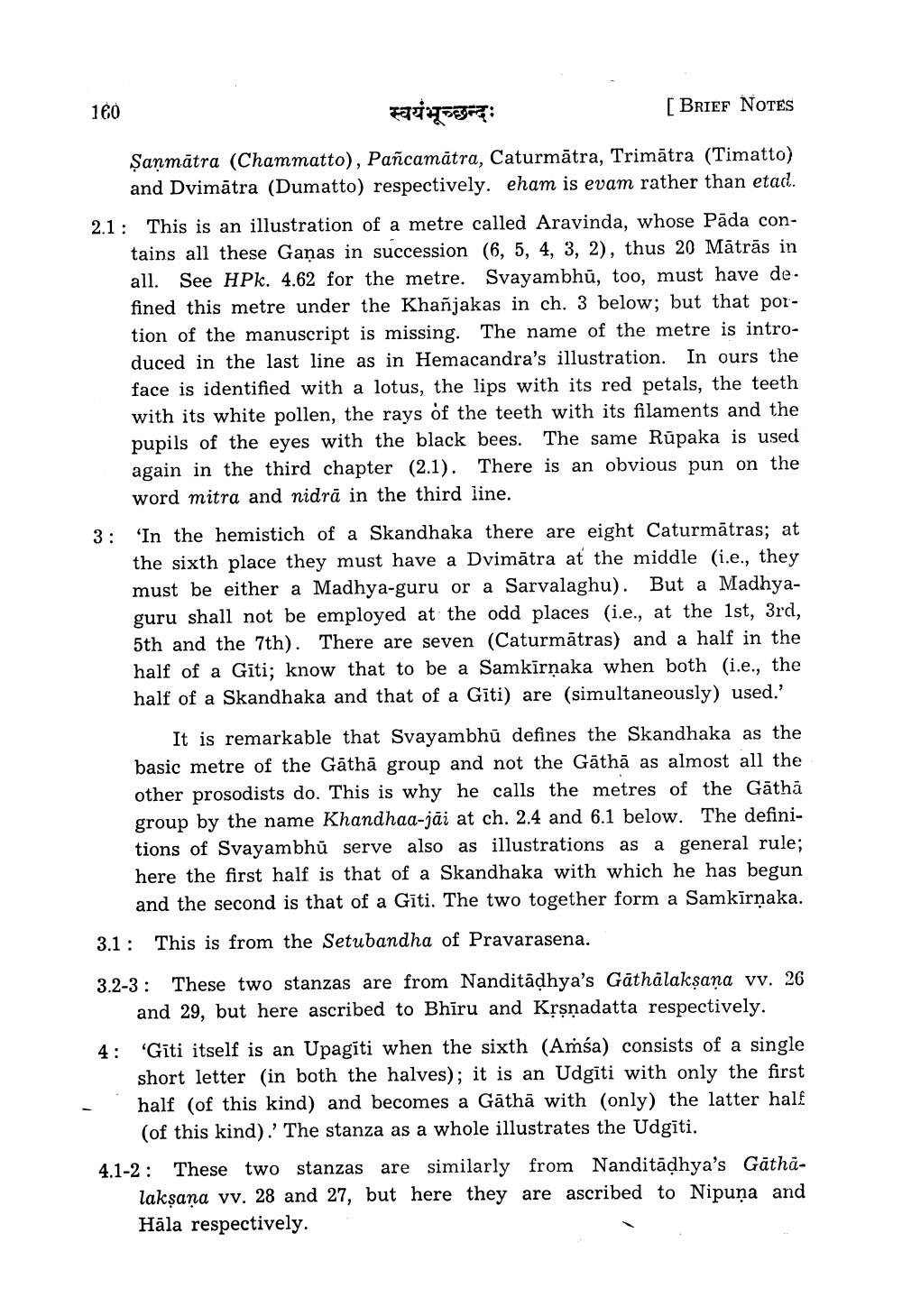________________
160
स्वयंभूच्छन्दः
[BRIEF NOTES
Şanmātra (Chammatto), Pañcamatra, Caturmātra, Trimātra (Timatto)
and Dvimātra (Dumatto) respectively. eham is evam rather than etad. 2.1: This is an illustration of a metre called Aravinda, whose Pāda con
tains all these Gaņas in succession (6, 5, 4, 3, 2), thus 20 Mātrās in all. See HPk. 4.62 for the metre. Svayambhū, too, must have de. fined this metre under the Khañjakas in ch. 3 below; but that portion of the manuscript is missing. The name of the metre is introduced in the last line as in Hemacandra's illustration. In ours the face is identified with a lotus, the lips with its red petals, the teeth with its white pollen, the rays of the teeth with its filaments and the pupils of the eyes with the black bees. The same Rūpaka is used again in the third chapter (2.1). There is an obvious pun on the word mitra and nidra in the third line.
3:
'In the hemistich of a Skandhaka there are eight Caturmätras; at the sixth place they must have a Dvimātra at the middle (i.e., they must be either a Madhya-guru or a Sarvalaghu). But a Madhyaguru shall not be employed at the odd places (i.e., at the 1st, 3rd, 5th and the 7th). There are seven (Caturmātras) and a half in the half of a Gīti; know that to be a Samkīrņaka when both (i.e., the half of a Skandhaka and that of a Gīti) are (simultaneously) used.'
It is remarkable that Svayambhu defines the Skandhaka as the basic metre of the Gāthā group and not the Gathā as almost all the other prosodists do. This is why he calls the metres of the Gāthā group by the name Khandhaa-jāi at ch. 2.4 and 6.1 below. The definitions of Svayambhū serve also as illustrations as a general rule; here the first half is that of a Skandhaka with which he has begun and the second is that of a Gīti. The two together form a Samkīrnaka.
3.1 : This is from the Setubandha of Pravarasena.
3.2-3: These two stanzas are from Nanditādhya's Gāthälaksana vv. 26
and 29, but here ascribed to Bhīru and Krsnadatta respectively. 4: "Gīti itself is an Upagiti when the sixth (Amśa) consists of a single
short letter (in both the halves); it is an Udgiti with only the first half (of this kind) and becomes a Gāthā with (only) the latter half (of this kind).' The stanza as a whole illustrates the Udgiti.
4.1-2: These two stanzas are similarly from Nanditādhya's Gātha
laksana vv. 28 and 27, but here they are ascribed to Nipuna and Hāla respectively.




